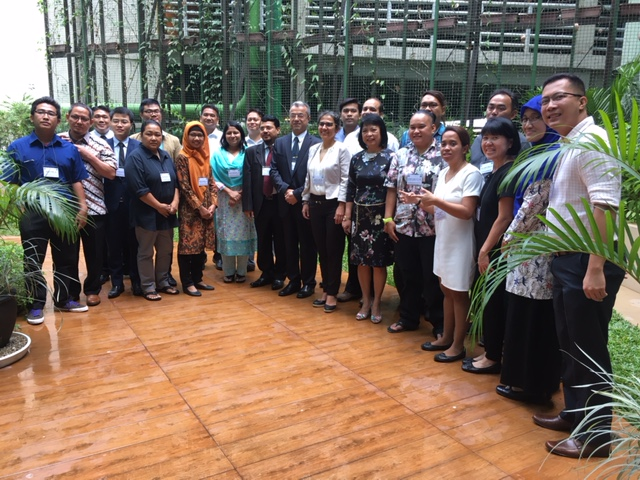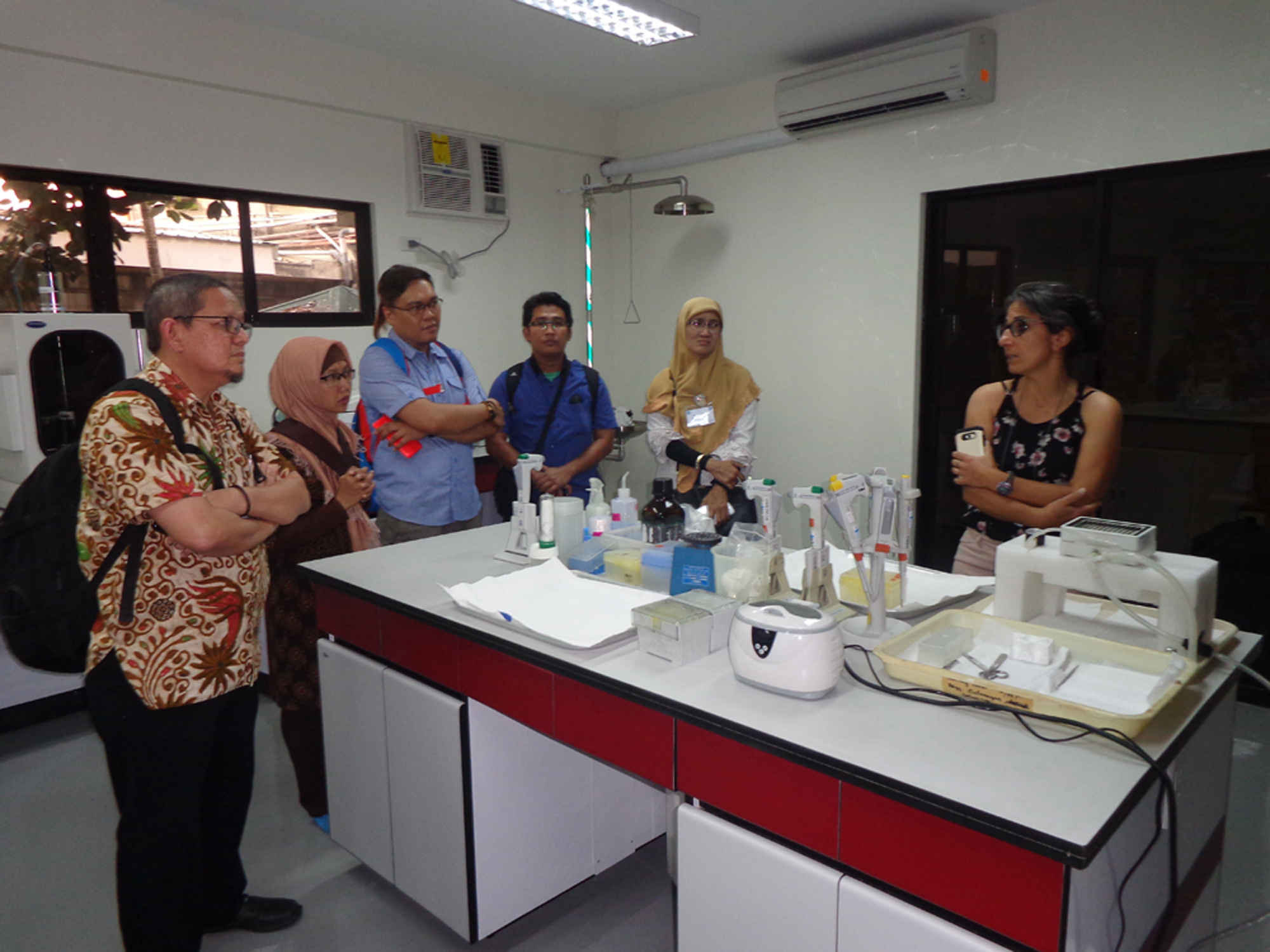
The participants of the Regional Workshop on Receptor Binding Assay (RBA) Method Validation and Related Statistical Approaches

IAEA expert Ms. Maria-Yasmine Bottein (extreme right) with some workshop participants visiting the PNRI RBA laboratory
PNRI Hosts Regional Workshop on Receptor Binding Assay for Red Tide
Taking another step in improving the detection of the dreaded red tide among countries in Asia and the Pacific, the Department of Science and Technology – Philippine Nuclear Research Institute (DOST-PNRI) hosted a Regional Workshop on Receptor Binding Assay (RBA) Method Validation and Related Statistical Approaches at the Novotel Manila Araneta Center in Quezon City.
Two experts from the International Atomic Energy Agency (IAEA) and 19 representatives from Bangladesh, Indonesia, Kuwait, Malaysia, Marshall Islands, Palau, the Philippines, Thailand and Vietnam participated in the week-long workshop held from April 24 to 28. The event also incorporated the Third Coordination Meeting for IAEA Project RAS 7026, under which the workshop was conducted.
The project aims to spread the use of RBA as a more efficient detection method for harmful algal blooms (HABs), more commonly known as red tide, which poses a serious threat to the health and livelihood of people in coastal areas.
Being an archipelagic country, the Philippines contributed greatly in the development of the method, with PNRI being designated as an IAEA Collaborating Center for Harmful Algal Blooms in 2005 and 2010. PNRI’s research work on the RBA method particularly involved its applications for paralytic shellfish poisoning caused by consuming mussels contaminated with saxitoxin from algal blooms.
The RBA method was approved in 2011 by the Association of Official Analytical Chemists (AOAC) and was recently transferred by PNRI to the Bureau of Fisheries and Aquatic Resources (BFAR) as an update to their older Mouse Bioassay method.
For this year, the workshop aimed to sustain the HAB studies in the Asia-Pacific Region and expand the RBA method to other types of toxins. An important aspect of these efforts is the continued validation of the method for specific types of toxins such as such as the ciguatoxin responsible for ciguatera fish poisoning.
The workshop also emphasized the provision of comparable quality of data among the participating countries and the need for statistical approaches to deal with uncertainties in the researchers’ data. These will be taken into consideration in a harmonized and standardized measurement approach for the RBA method. Each participant also reported its overall progress on the status of HAB studies in their respective countries.
Learn more about PNRI's research and development on the Receptor Binding Assay (RBA) technology for Harmful Algal Blooms, more commonly known as "red tide" in this episode of APRUB (NET 25) featuring PNRI Chemistry Research Section Senior Science Research Specialist Mr. Rhett Simon Tabbada.












































